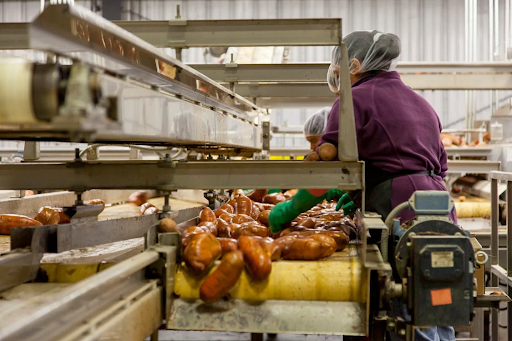
As an essential industry, the food production sector underscores the need to innovate, especially in terms of assets. Without this critical investment, food companies will not only suffer a reduced production capacity but they will also experience higher operational costs.
With this in mind, plant owners will need to be forward-thinking in finding industry solutions that streamline the production process, increase the longevity of facilities and equipment, and decrease maintenance orders and expenses. Accomplishing these goals requires adopting the right strategies, best practices, and tools that other key players in the sectors are already using. Here’s a guide to help get you started:
-
Use value stream mapping
The best way you can improve the production efficiency of your plant is to apply the principles of lean manufacturing, specifically value stream mapping. This model has existed since the early 20th century and it has become an ideal way for factories and even offices to streamline workflows and deliver quality products and services.
Value stream mapping involves analyzing the current state of the production process and identifying areas where the most waste and bottlenecks are produced. From there, draft an ideal workflow with the goal of reducing waste significantly.
-
Invest in quality maintenance parts
Food production facilities undergo significant amounts of wear and tear. This is true when the production process involves corrosive materials and handles large volumes of organic matter. Maintenance costs are bound to rise when repairs are only good for the short term. To ensure uninterrupted efficiency and reduce the likelihood of future and frequent repairs, you will have to make sure your equipment is fitted with quality parts.
When it comes to corrosion and heat resistance, replace production parts with hastelloy c276. Primarily used for chemical processing and waste treatment, this alloy can also be a primary material for storage tanks and sterilizing equipment. Investing in materials like these will make sure your plant remains functional for a long time.
-
Strengthen your quality assurance arm
Manufacturing food products is a complex matter of ensuring quality for consumers. Quality assurance, to a certain extent, can also help improve processes. By closely monitoring every phase of the manufacturing chain, you will be able to detect issues that may affect product safety and quality. Not only will this prevent defective products from entering the market, but it also uncovers human and non-human factors that produce waste.
Quality assurance and efficiency go hand in hand since product defects are often the result of failures in some areas of the supply chain that need to be addressed. Pulling this off would require documenting every step of the manufacturing process and using automated software to monitor the condition of each piece of equipment involved.
Currently, there are AI-driven platforms you can use to analyze processing times, trace materials, and organize inspection reports. From this, you will be able to develop insights you can use to bridge the gaps in the production process and find opportunities for innovation.
Endnote
When running a food production plant, finding ways to increase efficiency and reduce costs is crucial to the long-term success of the organization. Keeping this guide in mind is a good start in paving the way for your brand to become an industry leader.
